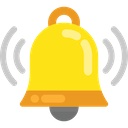RJS
Jedi Warrior
Offline
Does anyone have any tips for performing this job? This will be my first time working on brake hoses. I'm only doing the front calipers.
I'm soaking the nuts in PB Blaster for several days and plan to buy some flare nut wrenches. My biggest fear is these will be really tough to get off and ruining the metal pipes when removing the hoses. I really don't want to go down that road.
When installing the new hoses:
-should I prepare the threads with anything (i.e. locktite or teflon thread tape)?
-how tight do I want to tighten the connections? In my earlier days, I had a habit of ruining a lot of fasteners by tightening them within an inch of their life
-once installed, do I need to bleed all four corners or can I only bleed the front calipers?
The reason I am doing this is because the car pulls to right just as I apply the brakes. I tested the calipers and observed the following:
Right caliper: I can relieve both caliper pistons rather easily using a pair of channel lock pliers
Left caliper: it is very hard to depress either caliper piston. And after I depress the first caliper piston, it pushes back out when I depress the other piston in the same caliper.
So, I am fairly convinced I have a blocked or swollen brake hose.
Thanks all
Bob
I'm soaking the nuts in PB Blaster for several days and plan to buy some flare nut wrenches. My biggest fear is these will be really tough to get off and ruining the metal pipes when removing the hoses. I really don't want to go down that road.
When installing the new hoses:
-should I prepare the threads with anything (i.e. locktite or teflon thread tape)?
-how tight do I want to tighten the connections? In my earlier days, I had a habit of ruining a lot of fasteners by tightening them within an inch of their life
-once installed, do I need to bleed all four corners or can I only bleed the front calipers?
The reason I am doing this is because the car pulls to right just as I apply the brakes. I tested the calipers and observed the following:
Right caliper: I can relieve both caliper pistons rather easily using a pair of channel lock pliers
Left caliper: it is very hard to depress either caliper piston. And after I depress the first caliper piston, it pushes back out when I depress the other piston in the same caliper.
So, I am fairly convinced I have a blocked or swollen brake hose.
Thanks all
Bob

 Hi Guest!
Hi Guest!

 smilie in place of the real @
smilie in place of the real @
 Pretty Please - add it to our Events forum(s) and add to the calendar! >>
Pretty Please - add it to our Events forum(s) and add to the calendar! >> 
